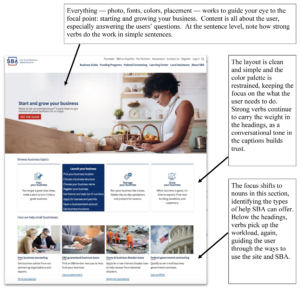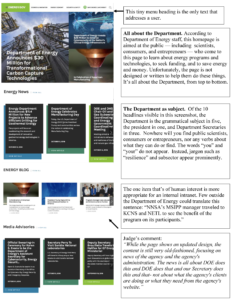
Agencies struggle to use clear language for public services
Federal agencies are slipping when it comes to using clear language everyone can understand on their public-facing websites. Some of the drop can be attributed to...
Federal agencies are slipping when it comes to using clear language everyone can understand on their public-facing websites. Some of the drop can be attributed to high turnover in the positions meant to work on this goal.
That’s according to the nonprofit Center for Plain Language, which released its seventh annual Federal Plain Language Report Card on Friday, ahead of International Plain Language Day. This year’s report card said that, overall, federal agencies dropped from a B to C grade from 2017 to 2018 for using plain language in their web writing.
“Close to half our agencies have gone down a grade in organizational compliance — staffing, training, reporting — since 2015,” David Lipscomb, a board member for the Center for Plain Language and director of the Writing Center at Georgetown University, said during a press call Friday. “It’s just time to restart, that’s all.”
A group of 12 judges scored the writing at 23 executive branch agencies and 15 cabinet-level departments based on criteria including understanding of audience, style, structure and design. The report card also measures organizational compliance with the Plain Writing Act of 2010.
This year’s highest scorers for writing, each earning an A’s, were the Small Business Administration and the Social Security Administration. Following closely behind with A- grades were the Agriculture and Education departments.

The lowest scorers for writing were the departments of Homeland Security and Housing and Urban Development. For organizational compliance, the departments of Commerce, Transportation, Treasury and HUD earned failing grades.
More agencies earned top grades in the organizational compliance domain. SSA, SBA, USDA, the Defense, Energy, Veterans Affairs, Health and Human Services departments, the National Archives and Records Administration and the General Services Administration each received an A+, according to the report card. Meanwhile the Homeland Security and Labor departments, as well as the Securities and Exchange Commission received A- grades.
Lipscomb said the Center saw a connection between an agency’s grades and staff turnover for the positions required by the Plain Writing Act: A senior plain writing official and a point of contact. The 23 agencies scored had an average 75 percent turnover rate for Plain Writing Act-required positions and nine of the 13 agencies, which have had complete turnover of those roles since 2015, dropped for organizational compliance and writing quality, he said.
“Those who stayed the same or improved in terms of writing quality from 2015 to 2018, all of them retained at least one person,” he said.

But he said that did not imply a connection between turnover for those positions and senior vacancies at agencies.
Those who stayed the same or improved from 2015-18 retained at least 1 person in the job roles.
Lipscomb also said that rubrics for this year’s writing grades changed, which may have affected the overall grades. They sampled agencies’ homepages and their most-visited pages, which Lipscomb said gives an insight into what information is most desired by the American public. This ranged from explanations of bed bugs and Lyme disease on HHS’ website, or high-schoolers looking up wind turbines on DOE’s website.
Rep. Dave Loebsack (D-Iowa) said agencies needed to better ensure that a commitment to plain language was not lost even during a change in administrations.
“Having been a congressman a number of years now, I believe more than ever that clear communication from the government is critical and that’s why I voted for the Plain Writing Act that was signed into law by President Obama in 2010,” Loebsack said on the press call.
Copyright © 2025 Federal News Network. All rights reserved. This website is not intended for users located within the European Economic Area.
Amelia Brust is a digital editor at Federal News Network.
Follow @abrustWFED
Related Stories





